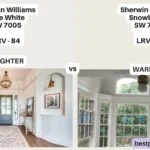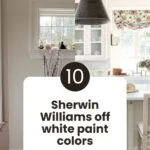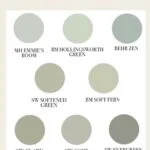Exploring the ideal shade of green to adorn your living space? Join me in examining the contrasting attributes of Forest Green vs Sage Green, helping you discover the perfect fit for your home!
The world of green paint hues is currently experiencing a resurgence in popularity, and I’m genuinely excited about it.
Green, with its innate sense of tranquility and warmth, can infuse your living spaces with an exquisite visual appeal.
Whether it’s the soothing Sage Green, the serene Blue Green, or the luxurious Dark Green, all shades of green are basking in the spotlight.
In this discussion, we’ll delve into the captivating realms of Forest Green and Sage Green, unraveling their distinctive qualities while drawing intriguing comparisons.

Comparing Forest Green and Sage Green – The Difference
When we talk about Forest Green and Sage Green, we’re essentially delving into the realm of green hues.
Forest Green is a deep, dark green reminiscent of the color you’d find in the lush needles of an evergreen tree. It typically carries a subtle touch of blue, lending it a cooler tone.
In contrast, Sage Green leans towards the warmer side of the spectrum. This green paint color often boasts hints of yellow, brown, or even a touch of gold. While Sage Green can be found in lighter shades, it’s not uncommon to come across darker variations as well. Warmth is the hallmark of Sage Green.
To truly grasp the distinctions, let’s explore specific paint colors that fall under each category—Forest Green and Sage Green.
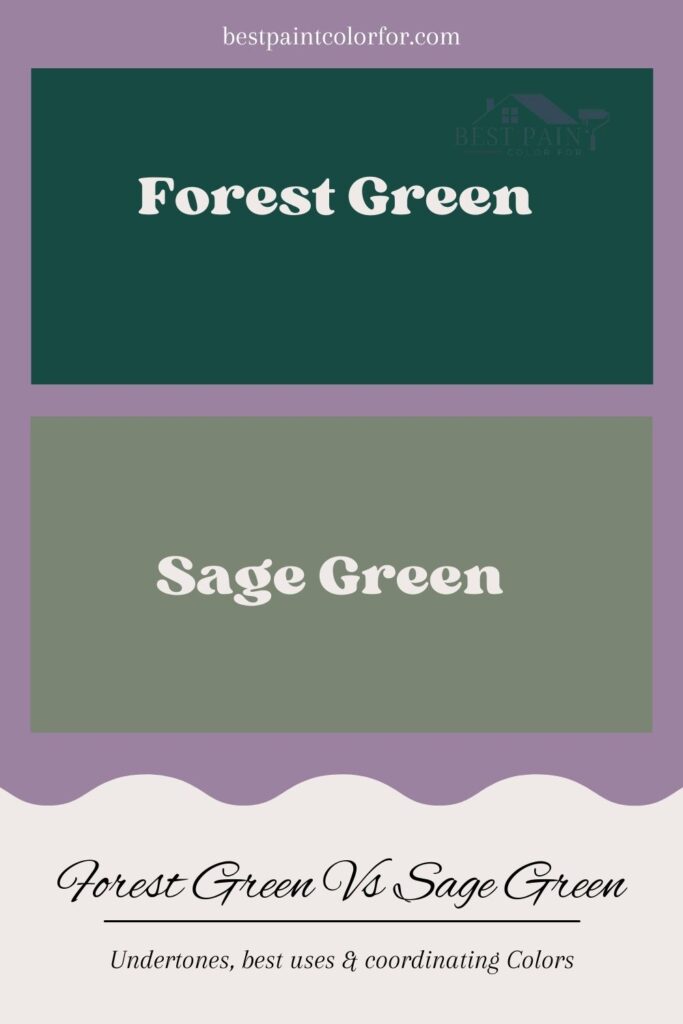
Also Read: Forest Green Vs Sage Green – The Difference & Color Review
Exploring Forest Green Paint Colors
When it comes to Forest Green paint options, there’s a captivating range to consider. Let’s dive into a few exquisite selections that showcase the versatility of this deep green hue.
Also Read: Forest Green Vs Sage Green – The Difference & Color Review
Benjamin Moore Forest Green:
As the name implies, this paint embodies the essence of Forest Green with a hint of blue, making it a captivating choice. Depending on the lighting, it can even take on a teal-like quality, echoing the vibrant shades of evergreen foliage. It’s a color that brings the outdoors in, lending a refreshing feel to your interior spaces.

Sherwin Williams Rookwood Sash Green
This offering from Sherwin Williams exudes a rich and luxurious forest green. With subtle blue undertones, it can occasionally exhibit teal-like hues in cooler lighting conditions. If you’re in search of a deep green shade that exudes a cool-toned charm, this one is worth considering.

Benjamin Moore Essex Green
For those who crave drama and coziness, Benjamin Moore’s Essex Green is an ideal choice. It boasts an extremely dark forest green hue that adds a touch of theatricality to any room it graces. Its depth creates an ambiance that’s both inviting and enveloping, making it an excellent option for creating intimate spaces.

Behr Meteorological
With an almost teal-like quality, Behr’s Meteorological green is a jewel tone that captivates the eye. Its generous infusion of blue undertones gives it a rich and vibrant character. What’s particularly appealing is its ability to harmonize seamlessly with both warm and cool color palettes, making it a versatile choice for various design schemes.

Clare Current Mood
This trendy paint color from Clare leans towards the teal end of the spectrum, thanks to its prominent blue undertones. It exudes a sense of sophistication and offers a delightful twist on the classic forest green. Whether used as an accent or for larger surface areas, Current Mood brings a touch of elegance to your decor.

Behr Rainforest
As the name suggests, Behr’s Rainforest is a rich and genuine green shade. Its deep, moody demeanor makes it an excellent option for smaller spaces, where it can create an intimate and cozy atmosphere. This true green hue adds a sense of depth and character to your interiors, making it a compelling choice for those who appreciate bold and striking colors.

Exploring Captivating Sage Green Paint Choices
When it comes to Sage Green paint colors, the palette is an enchanting array of earthy hues that can transform your living spaces. Let’s delve into some intriguing selections that offer unique qualities and the ability to adapt to varying lighting conditions.
Also Read: The 15 best sage green paint colors for 2023
Behr Nature’s Gift
Nature’s Gift from Behr is a captivating earthy green that strikes a harmonious balance between light green and its deeper counterparts. It’s an enchanting hue with subtle undertones of both blue and gray, and it’s known to undergo a delightful transformation under different lighting scenarios. This chameleon-like quality ensures that your space remains dynamic, with Nature’s Gift lending a refreshing and ever-evolving ambiance.

Sherwin Williams Liveable Green
As the name suggests, Liveable Green by Sherwin Williams is an inviting sage green option that leans slightly towards the warmer spectrum. With subtle hints of yellow or brown, this paint color responds to its surroundings. In rooms bathed in cool light, it exudes a refreshing green character, while in spaces blessed with abundant natural light, it may lean more towards a soothing beige. It’s a versatile choice that adapts to your room’s unique lighting conditions.

Benjamin Moore Sage Wisdom
If you’re seeking a sage green that embodies brightness without venturing into neon or pastel territory, Benjamin Moore’s Sage Wisdom is an excellent choice. This shade maintains a vibrant sage green essence while incorporating gray undertones to strike a balance. It’s the ideal pick if you desire the refreshing aura of green on your walls without the heaviness of darker shades.

Benjamin Moore Saybrook Sage
Saybrook Sage by Benjamin Moore radiates warmth and coziness with its rich yellow undertones. This sage green hue creates a welcoming atmosphere, especially when paired with flooring or tile that boasts warm tones. Its ability to infuse spaces with a snug and inviting feel makes it a standout choice for those aiming to establish a harmonious and inviting environment.
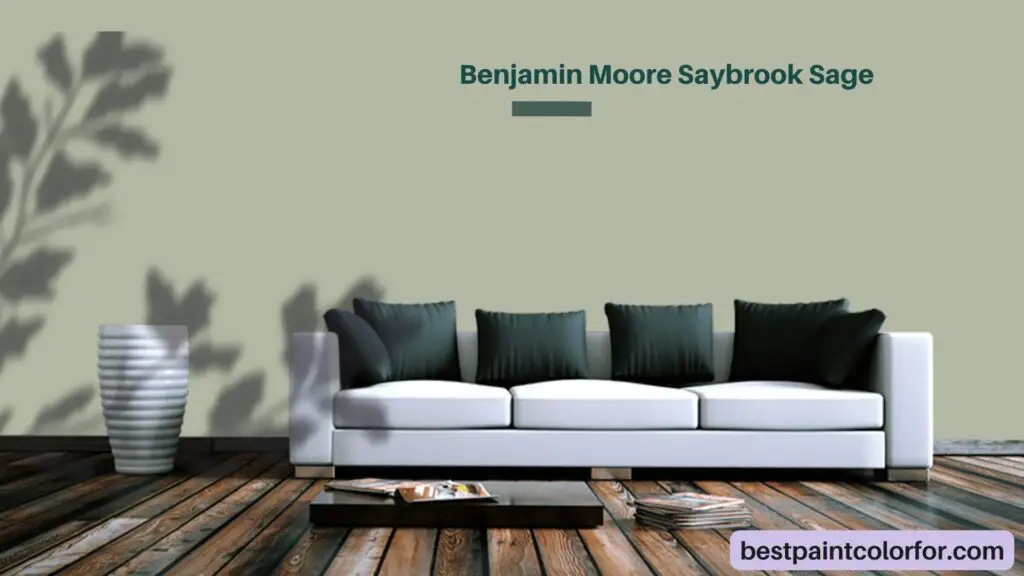
How to choose the best paint between Forest Green vs Sage Green?
As you explore these sage green options, consider your room’s existing elements, such as flooring, tile, and furniture, to make the best choice.
For spaces adorned with cool tones, Forest Green might be the way to go, while rooms with warm tones can find their perfect match in Sage Green.
These hues also harmonize beautifully with complementary and analogous colors, offering a world of design possibilities.
Whether you opt for the richness of Forest Green or the warmth of Sage Green, your choice will undoubtedly bring a touch of nature’s elegance into your home.
📝 Key takeaways
- Forest Green and Sage Green are popular choices for interior paint colors.
- Green paint can bring tranquility and warmth to living spaces.
- Forest Green is a deep, cooler-toned green with hints of blue.
- Sage Green is a warmer green with yellow, brown, or gold undertones.
- Forest Green paint options include Benjamin Moore and Sherwin Williams selections.
- Sage Green paint options include Behr and Benjamin Moore selections.
- Consider existing room elements when choosing between Forest Green and Sage Green.
- Forest Green and Sage Green can harmonize beautifully in design schemes.
- Olive Green is similar to Sage Green in terms of earthy tones.
- Hunter Green is close to Forest Green, offering depth and sophistication.
Frequently Asked Questions
Do forest green and sage go together?
Yes, Forest Green and Sage Green can harmonize beautifully in various design schemes. These two green shades create a pleasing contrast when paired together. Forest Green, with its deep and rich appearance, often serves as a grounding color, while Sage Green offers a lighter and more refreshing touch.
When used in combination, they can create a balanced and visually appealing palette. Consider using Forest Green for larger surfaces or as an accent, with Sage Green complementing it in smaller details or decor elements. The key is to strike a balance that suits your taste and the overall mood you want to convey in your space.
What color is similar to sage green?
A color similar to Sage Green is “Olive Green.” Olive Green shares some of the earthy, muted qualities that make Sage Green so appealing. Both colors often feature gray undertones, creating a soothing and versatile palette.
However, Olive Green tends to have a slightly stronger green tint and can be a bit darker than some lighter Sage Green shades. Nevertheless, both colors evoke a sense of nature and tranquility, making them suitable choices for creating serene and inviting environments.
What green is close to forest green?
A color close to Forest Green is “Hunter Green.” Hunter Green is a deep, dark green hue that shares similarities with Forest Green in terms of richness and depth. Both colors exude a sense of sophistication and can create a cozy atmosphere in a room. While Forest Green may have a touch of blue undertones, Hunter Green often leans more towards a true green shade. Both colors are versatile and can work well as accent colors or as the primary color in a design scheme, depending on your preferences and the desired ambiance.
Which color is forest green?
Forest Green is a deep, dark green color that closely resembles the shade of evergreen trees. It typically has a rich and luxurious appearance, with a subtle hint of blue undertones. Forest Green is known for its ability to create a sense of grounding and coziness in a space. It’s a versatile color that can be used to evoke feelings of nature and tranquility, making it a popular choice in interior design and decor.






